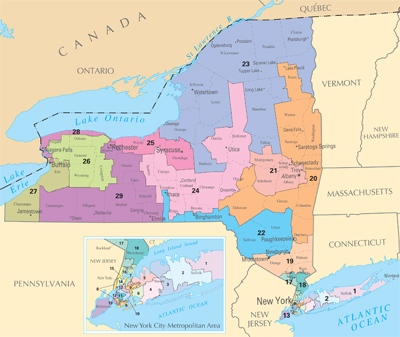NEW YORK—Ten years ago, there was not a single elected official of Asian descent in the entire state of New York. But since then, Asian Americans, more than 1 million of whom now reside in the state, have made great strides in New York politics. They currently occupy one seat in the State Assembly, two seats in New York City Council and the office of New York City comptroller.
Much of this happened thanks to the rapidly growing Asian American population and their greater participation in voting. But there is another important factor: redistricting.
John Liu, the first Asian American elected to the City Council and who now holds the comptroller’s office, owed his success partly to the redistricting efforts in 2001, when his district in Queens was redrawn to include downtown Flushing, Murray Hill and Queensboro Hill. The redistricting left out Corona, Bayside and Douglaston, where the percentage of Asian voters is lower.
Ten years later, with another redistricting process underway, immigrant communities throughout the city are weighing in on the process, hoping the new boundaries reflect the true face of New York.
Looking at Lines
Redistricting is a political process that occurs every 10 years. The electoral districts get redrawn based on the population change in the latest census. This affects elections at all levels, from school board, city council, state assembly, to the U.S. House of Representatives. The federal Voting Rights Act requires that the new boundaries be drawn in a manner that provides minority communities with opportunities to elect representatives of their choice.
Based on the 2010 U.S. census results, the 435 congressional seats will be re-apportioned according to population shifts among the states. New York will lose two seats, from 29 down to 27. Texas will gain four seats, while Midwestern states like Michigan, Iowa, Illinois and Ohio will each lose one seat.
At the state and city levels, boundaries will be redrawn to reflect changing demographics. Currently the redistricting effort is led by the New York State Legislative Task Force on Demographic Research and Reapportionment, which is comprised of four legislators and two non-legislators. Gov. Andrew Cuomo and a number of good government groups want the process to be more independent of the legislature. So far, though, they have not succeeded in changing the existing system. At the same time, though, several civic groups are calling for keeping communities of shared interests and backgrounds in the same districts so they can elect candidates who best represent them.
However they are drawn, the proposed districts must be approved by the state legislature and the governor. Meanwhile, the districts in three counties of New York City — the Bronx, Kings and New York — are subject to additional review and approval by the U.S. Justice Department’s Civil Rights Division.
Some other rules also apply. Districts must be compact and no more than twice as long as they are wide. A district has to be contiguous, meaning that all of its parts much touch or be connected by a bridge or tunnel. If a district covers two boroughs, no other district may cover the same two boroughs.
Read the rest of the article at Gotham Gazette




